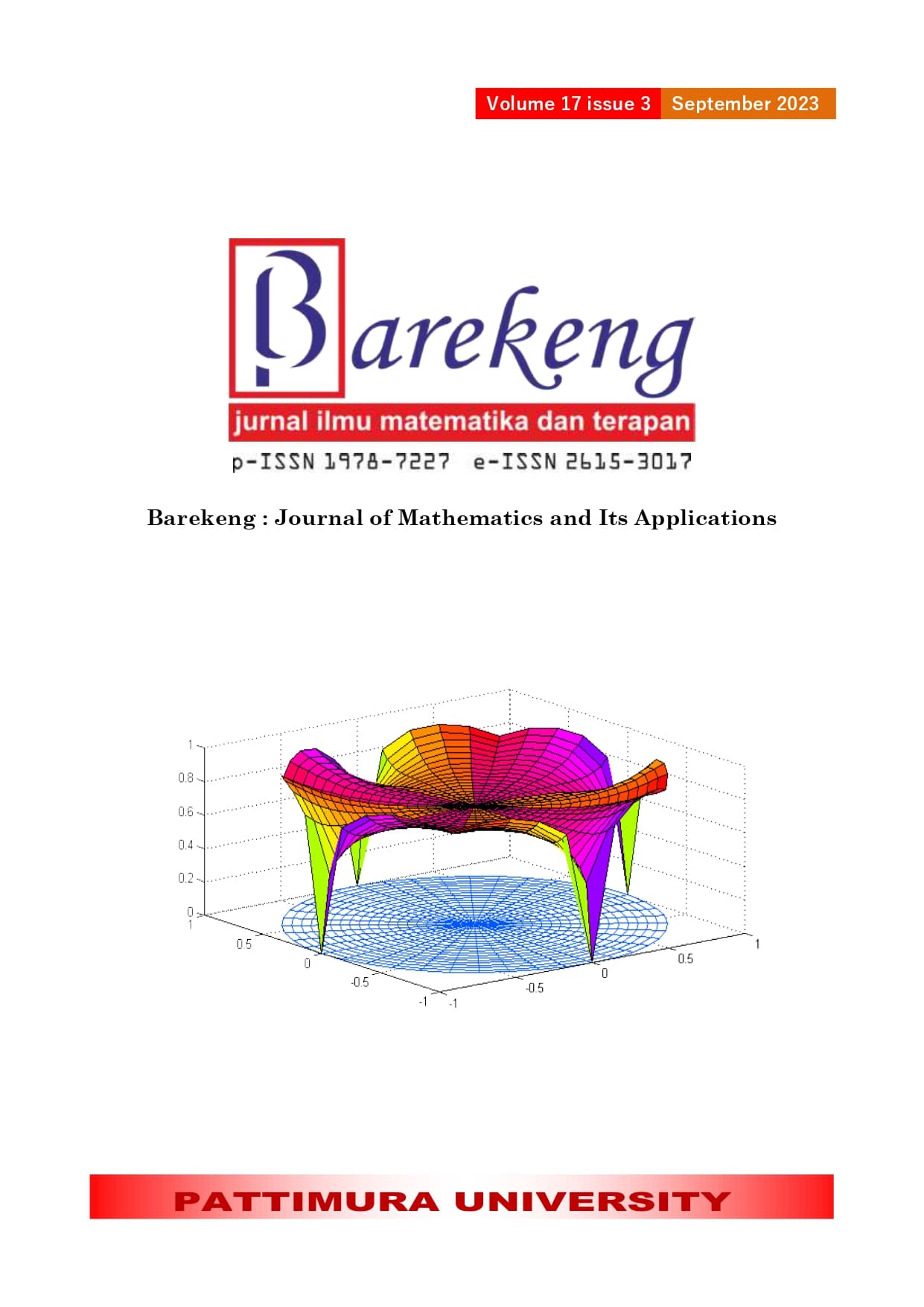POVERTY PANEL DATA MODELING IN SOUTH SUMATERA
Abstract
Poverty is still a major problem on Sumatra's island, despite abundant natural resources potential, such as mining and plantation products. Sumatra Island consists of 10 provinces divided into three regions: Northern Sumatra, Central Sumatra, and Southern Sumatra. The island of Sumatra has the highest number of poor people in the Southern Sumatra region, which reaches 2.88 million people. Poverty is an integrated concept with five dimensions: poverty, powerlessness, vulnerability to emergencies, dependency, and alienation, both geographically and sociologically. One method that can be used to analyze poverty data problems is panel data regression analysis, which combines two data, namely cross-sectional data and time series data. It is expected to produce more in-depth and comprehensive information, both the interrelationships between the variables and their development within a certain period. The panel data was related to poverty and included 60 districts in the southern Sumatra region from 2018 to 2020. This study aimed to model poverty panel data in Southern Sumatra. Three estimation methods were used in the panel data regression, including the Common Effect Model (CEM), Fixed Effect Model (FEM), and Random Effect Model (REM. The results of the model specification test show that the best model for estimating the percentage of poor people in the Southern Sumatra region is the Fixed Effect Model (FEM), with a value of R2 = 75.57%. The results of the significance test show that the variables that significantly influence the percentage of poverty in the Southern Sumatra region using the FEM model are the open unemployment rate (), life expectancy (), and the average length of schooling ().
Downloads
References
S. Abe, Support Vector Machines for Pattern Classification, Second ed., London: Springer-Verlag, 2010.
Arifin, Sinta, Skripsi Pengambilan Keputusan untuk Penilaian Kinerja Menggunakan Analytic Hierarchy Process (AHP) [Thesis on Decision Making for Performance Appraisal Using Analytic Hierarchy Process (AHP)], Yogyakarta: Yogyakata State University, 2013.
Brunelli, M, Introduction to the Analytic Hierarchy Process, New York: Springer, 2015.
Wahyudi, "Analisis Regresi Data Panel Pada Kemiskinan Provinsi Aceh Tahun 2016-2020," ["Panel Data Regression Analysis on Poverty in Aceh Province 2016-2020"] Journal of Mathematics and Applied Sciences, vol. 18, no. 2, pp. 264-271, 2021.
K. Budinirmala, P. Suciptawati, K. Jayanegara and E. N. Kencana, "Memodelkan Kemiskinan Penduduk Provinsi Bali dengan Regresi Data Panel," ["Modeling Poverty in Bali Province with Panel Data Regression"] E-Journal of Mathematics, vol. 7, no. 3, pp. 219-225, August 2018.
Hastuti, D. Dwi Puji, "Proses Hierarki Analisis (PHA) dalam Pengambilan Keputusan Multikriteria. Jurusan Pendidikan Matematika: Universitas Negeri Yogyakata.," ["Hierarchical Process Analysis (PHA) in Multicriteria Decision Making. Department of Mathematics Education: State University of Yogyakata,"] 2010.
Kelelufna, Solomon, "Skripsi Aplikasi Proses Hirarki Analitik (PHA) Sistem Pemilihan Keputusan Pembelian Sepeda Motor. Jurusan Matematika: Universitas Pattimura.," ["Thesis Application of Analytic Hierarchy Process (PHA) Motorcycle Purchase Decision Selection System. Department of Mathematics: Pattimura University,"] 2016.
Manggiora, G. M, "Computer-Aided Decision Making in Pharmaceutical Research. Proceedings of the Beilstein-Institut Workshop, Bozen, Italy," 2002.
E. Mu, "Practical Decision Making. Springer Briefs in Operations Research," 2017.
Permadi, Bambang, "AHP Pusat Antar Universitas – Studi Ekonomi. Jakarta: Universitas Indonesia.," ["AHP Inter-University Center - Economic Studies. Jakarta: University of Indonesia,"] 1992.
Sukarto, Haryono, "Pemilihan Model Transportasi di DKI Jakarta dengan AnalisisKebijakan “Proses Hierarki Analitik” ["Selection of Transportation Model in DKI Jakarta with "Analytic Hierarchy Process" Policy Analysis,"] Journal of Civil Engineering, p. Vol. 3 No.1, 2006.
S.Abe, Support Vector Machines for Pattern Classification, second ed., London: Spinger-Verlag, 2010.
L. Fausett, Fundamentals of Neural Networks: Architectures, Fundamentals, and Applications, New Jersey: Prentice-Hall, Inc. 1994.
N. I. Pradasari, F. T. P. W. and D. Triyanto, "Aplikasi Jaringan Saraf Tiruan untuk memprediksi Penyakit Saluran Pernapasan dengan Metode Backpropagation," ["Application of Artificial Neural Network to predict Respiratory Disease with Backpropagation Method,"] Untan Computer System Coding Journal, vol. 1, no. 1, 2013.
H. Sasrawan, "Kehidupan Awal Masyarakat Indonesia," ["The Early Life of Indonesian Society,"] January 2, 2013. [Online]. Available: http://hedisasrawan.blogspot.co.id/2013/01/kehidupan-awal-masyarakat-indonesia.html?m=1. [Accessed November 5, 2015].
I. Ghozali, Application of Multivariate Analysis with the IBM SPSS 21 Update PLS Regression Program, Semarang: Publishing Agency: Diponegoro University, 2013.
A. Widarjono, Ekonometrika Pengantar daan Aplikasinya [Econometrics Introduction and Application], Yogyakarta: EKONISIA, 2009.
Copyright (c) 2023 Nurul Hidayati, Herlin Fransiska, Winalia Agwil

This work is licensed under a Creative Commons Attribution-ShareAlike 4.0 International License.
Authors who publish with this Journal agree to the following terms:
- Author retain copyright and grant the journal right of first publication with the work simultaneously licensed under a creative commons attribution license that allow others to share the work within an acknowledgement of the work’s authorship and initial publication of this journal.
- Authors are able to enter into separate, additional contractual arrangement for the non-exclusive distribution of the journal’s published version of the work (e.g. acknowledgement of its initial publication in this journal).
- Authors are permitted and encouraged to post their work online (e.g. in institutional repositories or on their websites) prior to and during the submission process, as it can lead to productive exchanges, as well as earlier and greater citation of published works.






1.gif)



